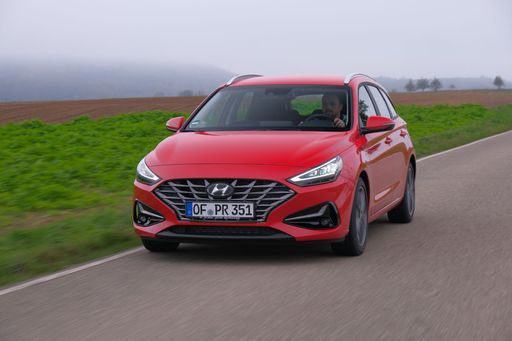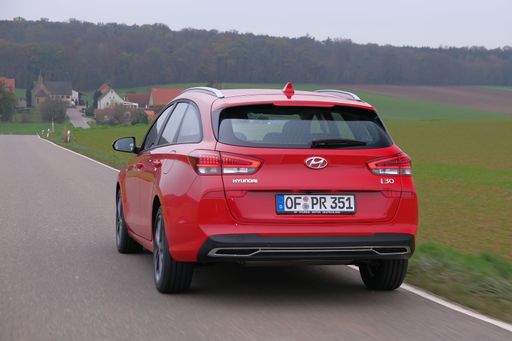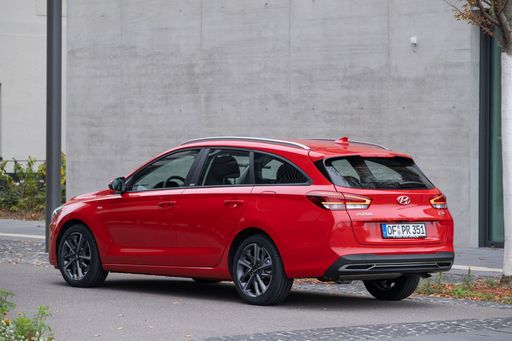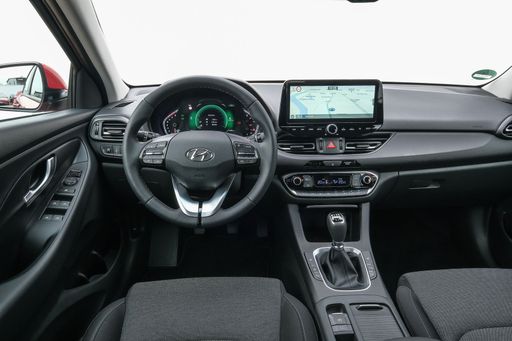Hyundai i30 Wagon vs Mazda 6 Saloon – Which one offers the better deal?
Everyday use, family trips or long-distance drives – here’s where the differences show.
Discover whether Hyundai i30 Wagon or Mazda 6 Saloon fits your lifestyle better.
Here’s where it gets real: The technical differences in detail
Costs and Efficiency: Looking at overall running costs, both models reveal some interesting differences in everyday economy.
Hyundai i30 Wagon has a convincingly advantage in terms of price – it starts at 24800 £, while the Mazda 6 Saloon costs 38500 £. That’s a price difference of around 13637 £.
Engine and Performance: Power, torque and acceleration are the classic benchmarks for car enthusiasts – and here, some clear differences start to show.
When it comes to engine power, the Mazda 6 Saloon has a significantly edge – offering 258 HP compared to 140 HP. That’s roughly 118 HP more horsepower.
In acceleration from 0 to 100 km/h, the Mazda 6 Saloon is evident quicker – completing the sprint in 7.60 s, while the Hyundai i30 Wagon takes 9.80 s. That’s about 2.20 s faster.
In terms of top speed, the Hyundai i30 Wagon performs somewhat better – reaching 197 km/h, while the Mazda 6 Saloon tops out at 175 km/h. The difference is around 22 km/h.
There’s also a difference in torque: the Mazda 6 Saloon pulls evident stronger with 320 Nm compared to 253 Nm. That’s about 67 Nm difference.
Space and Everyday Use: Cabin size, boot volume and payload all play a role in everyday practicality. Here, comfort and flexibility make the difference.
Both vehicles offer seating for 5 people.
In curb weight, the Hyundai i30 Wagon is clearly lighter – 1316 kg compared to 2027 kg. The difference is around 711 kg.
In terms of boot space, the Hyundai i30 Wagon offers convincingly more room – 602 L compared to 336 L. That’s a difference of about 266 L.
In maximum load capacity, the Hyundai i30 Wagon performs clearly perceptible better – up to 1650 L, which is about 576 L more than the Mazda 6 Saloon.
When it comes to payload, Hyundai i30 Wagon evident takes the win – 524 kg compared to 360 kg. That’s a difference of about 164 kg.
Our conclusion: The Hyundai i30 Wagon proves to be dominates this comparison and thus becomes our DriveDuel Champion!
Overall, Hyundai i30 Wagon is the better all-rounder in this comparison.
Hyundai i30 Wagon
The Hyundai i30 Wagon offers a blend of practicality and style, making it a popular choice for families and those in need of extra space. Its sleek exterior and comfortable interior provide a pleasant driving experience, while advanced safety features ensure peace of mind on the road. The i30 Wagon stands out with its impressive fuel efficiency and reliability, catering to both urban and rural lifestyles.
details @ hyundai.news
@ hyundai.news
 @ hyundai.news
@ hyundai.news
 @ hyundai.news
@ hyundai.news
 @ hyundai.news
@ hyundai.news
 @ hyundai.news
@ hyundai.news
Mazda 6 Saloon
The Mazda 6 saloon embodies elegant design and a refined driving experience, making it a standout in its class. Its sleek exterior lines are matched by a sophisticated interior that prioritises comfort and style. On the road, the Mazda 6 delivers a balanced performance, blending smooth handling with a responsive drive that's sure to satisfy enthusiasts and everyday drivers alike.
details

|
|
|
|
|
Costs and Consumption |
|
|---|---|
|
Price
24800 - 30100 £
|
Price
38500 - 41600 £
|
|
Consumption L/100km
5.7 - 6 L
|
Consumption L/100km
-
|
|
Consumption kWh/100km
-
|
Consumption kWh/100km
16.5 - 16.6 kWh
|
|
Electric Range
-
|
Electric Range
479 - 552 km
|
|
Battery Capacity
-
|
Battery Capacity
-
|
|
co2
130 - 136 g/km
|
co2
0 g/km
|
|
Fuel tank capacity
50 L
|
Fuel tank capacity
-
|
Dimensions and Body |
|
|---|---|
|
Body Type
Estate
|
Body Type
Sedan
|
|
Seats
5
|
Seats
5
|
|
Doors
5
|
Doors
5
|
|
Curb weight
1316 - 1461 kg
|
Curb weight
2027 - 2028 kg
|
|
Trunk capacity
602 L
|
Trunk capacity
336 L
|
|
Length
4585 mm
|
Length
4921 mm
|
|
Width
1795 mm
|
Width
1890 mm
|
|
Height
1475 mm
|
Height
1491 mm
|
|
Max trunk capacity
1650 L
|
Max trunk capacity
1074 L
|
|
Payload
439 - 524 kg
|
Payload
359 - 360 kg
|
Engine and Performance |
|
|---|---|
|
Engine Type
Petrol, Petrol MHEV
|
Engine Type
Electric
|
|
Transmission
Manuel, Automatic
|
Transmission
Automatic
|
|
Transmission Detail
Manual Gearbox, Dual-Clutch Automatic
|
Transmission Detail
Reduction Gearbox
|
|
Drive Type
Front-Wheel Drive
|
Drive Type
Rear-Wheel Drive
|
|
Power HP
100 - 140 HP
|
Power HP
245 - 258 HP
|
|
Acceleration 0-100km/h
9.8 - 13.3 s
|
Acceleration 0-100km/h
7.6 - 7.8 s
|
|
Max Speed
178 - 197 km/h
|
Max Speed
175 km/h
|
|
Torque
172 - 253 Nm
|
Torque
320 Nm
|
|
Number of Cylinders
3 - 4
|
Number of Cylinders
-
|
|
Power kW
74 - 103 kW
|
Power kW
180 - 190 kW
|
|
Engine capacity
998 - 1482 cm3
|
Engine capacity
-
|
General |
|
|---|---|
|
Model Year
2024
|
Model Year
2025
|
|
CO2 Efficiency Class
D, E
|
CO2 Efficiency Class
A
|
|
Brand
Hyundai
|
Brand
Mazda
|
What drivetrain options does the Hyundai i30 Wagon have?
Available configurations include Front-Wheel Drive.
The prices and data displayed are estimates based on German list prices and may vary by country. This information is not legally binding.
